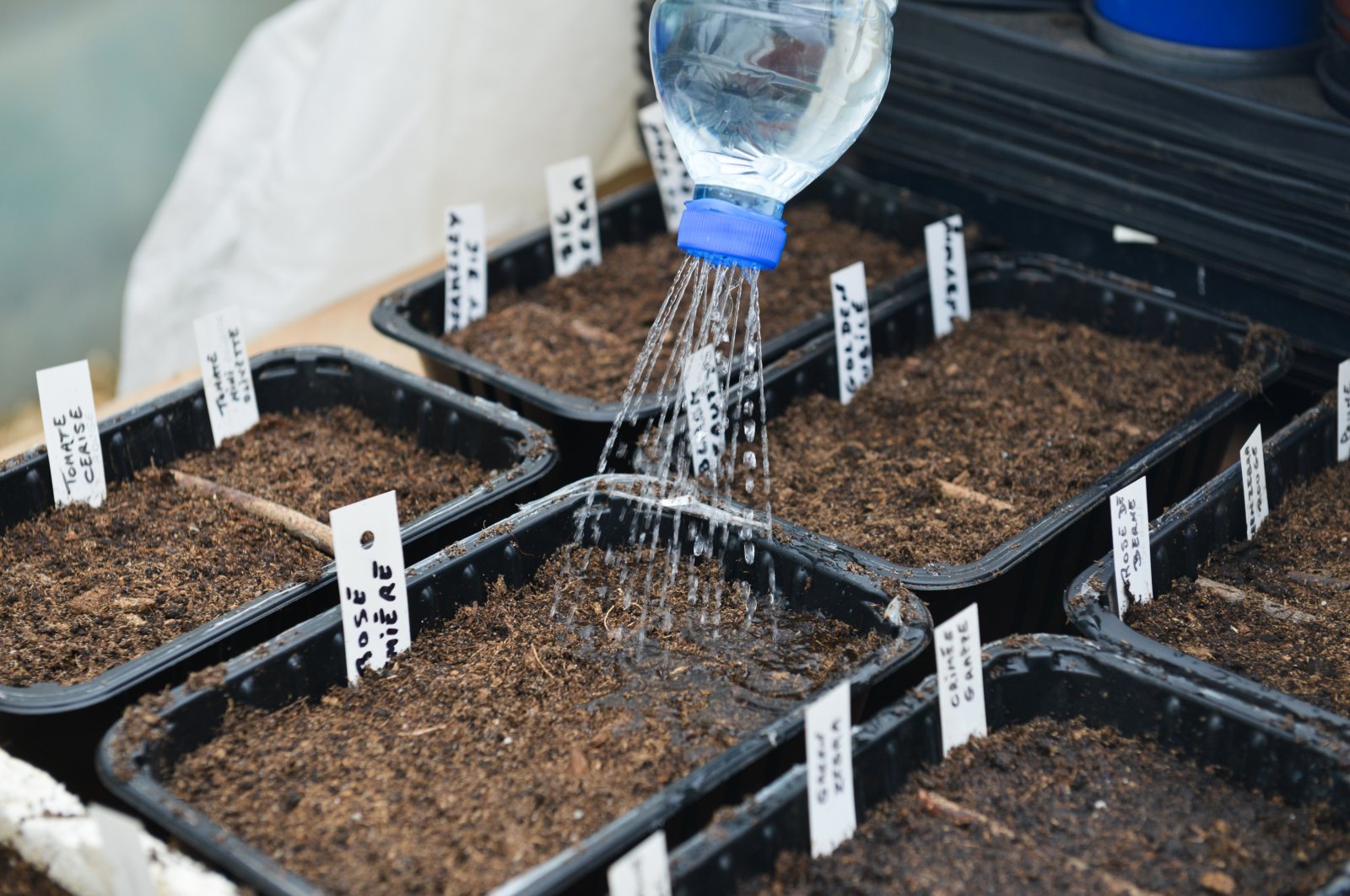Türkiye aims to achieve 15% wastewater reuse amid global crisis
Türkiye aims to achieve 15% wastewater reuse amid global crisis | Daily Sabah Daily Sabah


Sustainable Wastewater Reuse in Türkiye

In the face of a global water crisis fueled by urbanization, greenhouse gas emissions, climate change, and industrialization, Türkiye’s Ministry of Environment, Urbanization, and Climate Change is spearheading initiatives to tackle water scarcity through wastewater reuse. These efforts have already yielded significant results, with the country surpassing its 5% target for treated wastewater reuse for 2023 in the first half of the year, reaching an impressive 5.2%. The ministry now aims to further elevate this rate to 15% by 2030.
Water Scarcity and the Importance of Wastewater Treatment
As water resources dwindle globally, the imbalance between supply and demand intensifies, posing a growing threat of water scarcity. Wastewater treatment plays a pivotal role in mitigating the environmental impact of used water and ensuring the sustainable utilization of water resources.
Current Wastewater Discharge Statistics in Türkiye
According to the Water and Wastewater Statistics published by the Turkish Statistical Institute in 2020, nearly 15.3 billion cubic meters of wastewater, including 9.5 billion cubic meters of cooling water, were directly discharged into the environment by municipalities, villages, manufacturing industry workplaces, thermal power plants, organized industrial zones, and mining enterprises.
Incentives for Wastewater Reuse
To encourage wastewater reuse, the ministry offers financial incentives, including refunds of up to 50% on electricity bills, to treatment facilities. Following amendments to Environmental Law No. 2872, this refund rate is gradually increased to 100% for organizations that employ advanced treatment techniques and achieve specified reuse rates.
Expert Perspective on Wastewater Reuse
Professor Sinan Uyanık, a lecturer at the Bursa Technical University Faculty of Engineering and Natural Sciences, emphasized the significance of wastewater reuse in protecting water resources, conserving water, and preventing coastal pollution. He also noted that reuse can provide additional resources, particularly in regions with low rainfall and water shortages.
Global Examples of Wastewater Purification and Reuse
While desalination of seawater is considered an alternative method, it requires substantial energy input, making wastewater purification a more environmentally friendly solution. Singapore, a water-scarce nation, serves as a global example of wastewater purification and reuse with its innovative “NEWater” program. The city-state collects and purifies wastewater, providing it to the population for consumption, effectively recycling 40% of the city’s water supply.
Similar practices are observed in Spain, where wastewater treatment facilities, like the Llobregat wastewater treatment facility in Barcelona, transform wastewater into purified water used for environmental purposes, agriculture, and industry.
Wastewater Reuse in Türkiye
In Türkiye, wastewater reuse is also gaining traction. Notably, the Kullar Wastewater Treatment Plant in Kocaeli purifies water for use by Tüpraş, an oil refinery, after advanced treatment. Additionally, in the organized industrial zone in Gebze, wastewater produced by the automotive industry is treated and reused, ensuring a reliable source of high-quality water for industrial processes.
Addressing Water Stress and Protecting Strategic Water Resources
As Türkiye faces water stress, Uyanık stressed the importance of wastewater reuse in regions like Konya and Burdur, where drought is prevalent. He also called for stricter controls on groundwater extraction, highlighting the need to safeguard these strategic water resources.
Conclusion
Türkiye’s journey toward enhanced wastewater reuse underscores the critical role that responsible water management plays in addressing the global water crisis. As the nation sets its sights on ambitious targets for 2030, it serves as an inspiring example of proactive environmental stewardship.
SDGs, Targets, and Indicators
| SDGs | Targets | Indicators |
|---|---|---|
| SDG 6: Clean Water and Sanitation | Target 6.3: Improve water quality by reducing pollution, eliminating dumping, and minimizing release of hazardous chemicals and materials | – Percentage of treated wastewater reused – Percentage of organizations achieving specified reuse rates |
| SDG 9: Industry, Innovation, and Infrastructure | Target 9.4: Upgrade infrastructure and retrofit industries to make them sustainable, with increased resource-use efficiency and greater adoption of clean and environmentally sound technologies and industrial processes | – Number of wastewater treatment facilities employing advanced treatment techniques |
| SDG 13: Climate Action | Target 13.1: Strengthen resilience and adaptive capacity to climate-related hazards and natural disasters in all countries | – Reduction in greenhouse gas emissions from wastewater treatment processes |
| SDG 14: Life Below Water | Target 14.1: Prevent and significantly reduce marine pollution of all kinds, particularly from land-based activities, including marine debris and nutrient pollution | – Reduction in the discharge of untreated wastewater into the environment |
1. Which SDGs are addressed or connected to the issues highlighted in the article?
SDG 6: Clean Water and Sanitation
The article discusses the global water crisis and the initiatives taken by Türkiye’s Ministry of Environment, Urbanization, and Climate Change to tackle water scarcity through wastewater reuse. This directly connects to SDG 6, which aims to ensure availability and sustainable management of water and sanitation for all.
SDG 9: Industry, Innovation, and Infrastructure
The article mentions the financial incentives offered by the ministry to wastewater treatment facilities and the employment of advanced treatment techniques. These initiatives align with SDG 9, which focuses on building resilient infrastructure, promoting inclusive and sustainable industrialization, and fostering innovation.
SDG 13: Climate Action
The article highlights the role of wastewater treatment in mitigating the environmental impact of used water. By reducing pollution and minimizing the release of hazardous chemicals, wastewater treatment contributes to climate action, as emphasized in SDG 13.
SDG 14: Life Below Water
The article mentions the direct discharge of wastewater into the environment, which can contribute to marine pollution. By promoting wastewater reuse and reducing untreated wastewater discharge, Türkiye’s initiatives align with SDG 14, which aims to prevent and reduce marine pollution.
2. What specific targets under those SDGs can be identified based on the article’s content?
Target 6.3: Improve water quality by reducing pollution, eliminating dumping, and minimizing release of hazardous chemicals and materials
The article emphasizes the significance of wastewater treatment in mitigating environmental impact and ensuring the sustainable utilization of water resources. By promoting wastewater reuse, Türkiye aims to improve water quality and achieve Target 6.3 under SDG 6.
Target 9.4: Upgrade infrastructure and retrofit industries to make them sustainable, with increased resource-use efficiency and greater adoption of clean and environmentally sound technologies and industrial processes
Türkiye’s Ministry of Environment, Urbanization, and Climate Change offers financial incentives to wastewater treatment facilities and encourages the employment of advanced treatment techniques. These initiatives align with Target 9.4 under SDG 9, which focuses on upgrading infrastructure and industries to make them sustainable.
Target 13.1: Strengthen resilience and adaptive capacity to climate-related hazards and natural disasters in all countries
The article highlights the role of wastewater treatment in mitigating the environmental impact of used water, which contributes to strengthening resilience and adaptive capacity to climate-related hazards. By addressing water scarcity through wastewater reuse, Türkiye’s initiatives align with Target 13.1 under SDG 13.
Target 14.1: Prevent and significantly reduce marine pollution of all kinds, particularly from land-based activities, including marine debris and nutrient pollution
The article mentions the direct discharge of wastewater into the environment, which can contribute to marine pollution. By promoting wastewater reuse and reducing untreated wastewater discharge, Türkiye’s initiatives align with Target 14.1 under SDG 14, which aims to prevent and reduce marine pollution.
3. Are there any indicators mentioned or implied in the article that can be used to measure progress towards the identified targets?
– Percentage of treated wastewater reused: The article mentions that Türkiye surpassed its 5% target for treated wastewater reuse for 2023, reaching an impressive 5.2% in the first half of the year. This indicator can be used to measure progress towards Target 6.3 under SDG 6.
– Percentage of organizations achieving specified reuse rates: The article mentions that organizations that employ advanced treatment techniques and achieve specified reuse rates can receive a refund rate of up to 100% on electricity bills. This indicator can be used to measure progress towards Target 6.3 under SDG 6.
– Number of wastewater treatment facilities employing advanced treatment techniques: The article highlights the employment of advanced treatment techniques and financial incentives offered to wastewater treatment facilities. The number of facilities employing these techniques can be used as an indicator to measure progress towards Target 9.4 under SDG 9.
– Reduction in greenhouse gas emissions from wastewater treatment processes: Although not explicitly mentioned in the article, wastewater treatment processes can contribute to greenhouse gas emissions reduction. This indicator can be used to measure progress towards Target 13.1 under SDG 13.
– Reduction in the discharge of untreated wastewater into the environment: The article mentions the direct discharge of wastewater into the environment and the need for wastewater treatment to mitigate environmental impact. The reduction in untreated wastewater discharge can be used as an indicator to measure progress towards Target 14.1 under SDG 14.
4. Table: SDGs, Targets, and Indicators
| SDGs | Targets | Indicators |
|---|---|---|
| SDG 6: Clean Water and Sanitation | Target 6.3: Improve water quality by reducing pollution, eliminating dumping, and minimizing release of hazardous chemicals and materials | – Percentage of treated wastewater reused – Percentage of organizations achieving specified reuse rates |
| SDG 9: Industry, Innovation, and Infrastructure | Target 9.4
Behold! This splendid article springs forth from the wellspring of knowledge, shaped by a wondrous proprietary AI technology that delved into a vast ocean of data, illuminating the path towards the Sustainable Development Goals. Remember that all rights are reserved by SDG Investors LLC, empowering us to champion progress together. Source: dailysabah.com
Join us, as fellow seekers of change, on a transformative journey at https://sdgtalks.ai/welcome, where you can become a member and actively contribute to shaping a brighter future.
|








